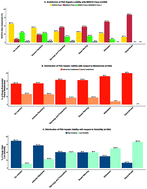Evaluation of the relevance of DILI predictive hypotheses in early drug development: review of in vitro methodologies vs. BDDCS classification†
Abstract
Drug-induced liver injury (DILI) is a major safety concern; it occurs frequently; it is idiosyncratic; it cannot be adequately predicted; and a multitude of underlying mechanisms has been postulated. A number of experimental approaches to predict human DILI have been proposed utilizing in vitro screening such as inhibition of mitochondrial function, hepatobiliary transporter inhibition, reactive metabolite formation with and without covalent binding, and cellular health, but they have achieved only minimal success. Several studies have shown total administered dose alone or in combination with drug lipophilicity to be correlated with a higher risk of DILI. However, it would be best to have a predictive DILI methodology early in drug development, long before the clinical dose is known. Here we discuss the extent to which Biopharmaceutics Drug Disposition Classification System (BDDCS) defining characteristics, independent of knowing actual drug pharmacokinetics/pharmacodynamics and dose, can be used to evaluate prior published predictive proposals. Our results show that BDDCS Class 2 drugs exhibit the highest DILI severity, and that all of the short-lived published methodologies evaluated here, except when daily dose is known, do not yield markedly better predictions than BDDCS. The assertion that extensively metabolized compounds are at higher risk of developing DILI is confirmed, but can be enhanced by differentiating BDDCS Class 2 from Class 1 drugs. Conclusion: Our published analyses suggest that comparison of proposed DILI prediction methodologies with BDDCS classification is a useful tool to evaluate the potential reliability of newly proposed algorithms, although BDDCS classification itself is not sufficiently predictive. Almost all of the predictive DILI metrics do no better than just avoiding BDDCS Class 2 drugs, although some early data with microliver platforms enabling long-enduring metabolic competency show promising results.

- This article is part of the themed collection: Recent Review Articles


 Please wait while we load your content...
Please wait while we load your content...